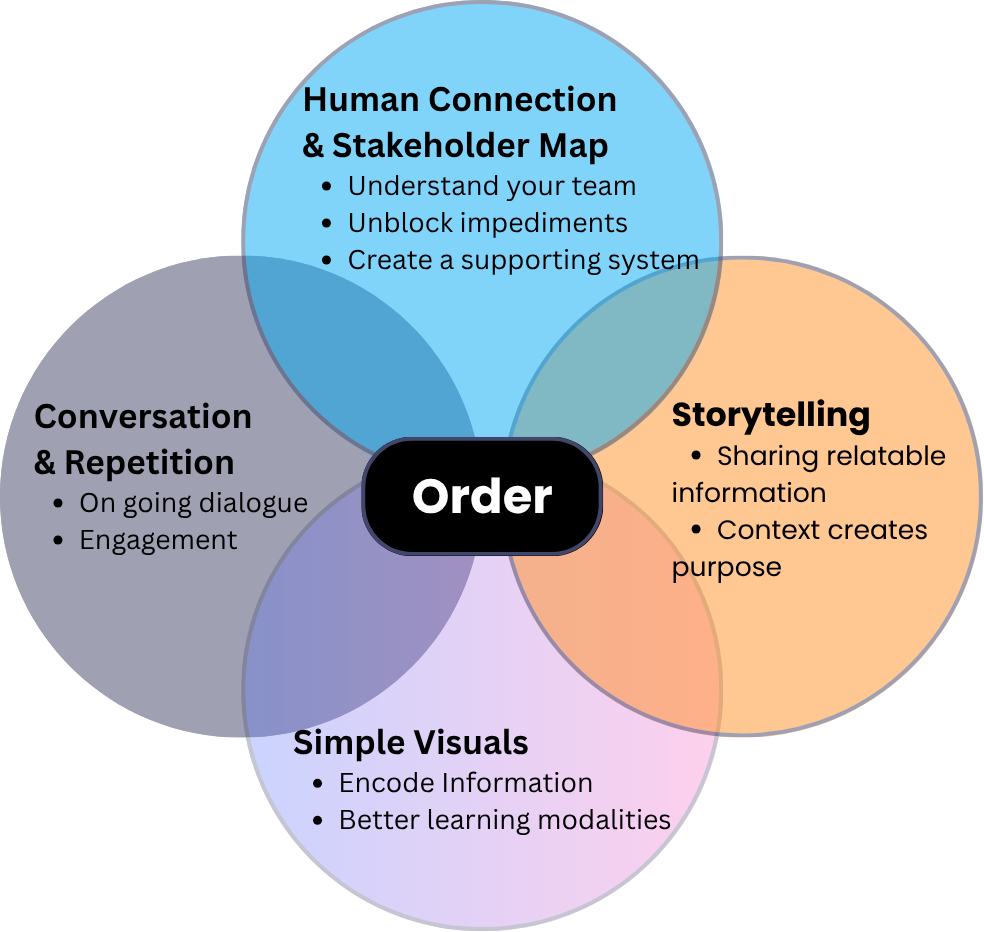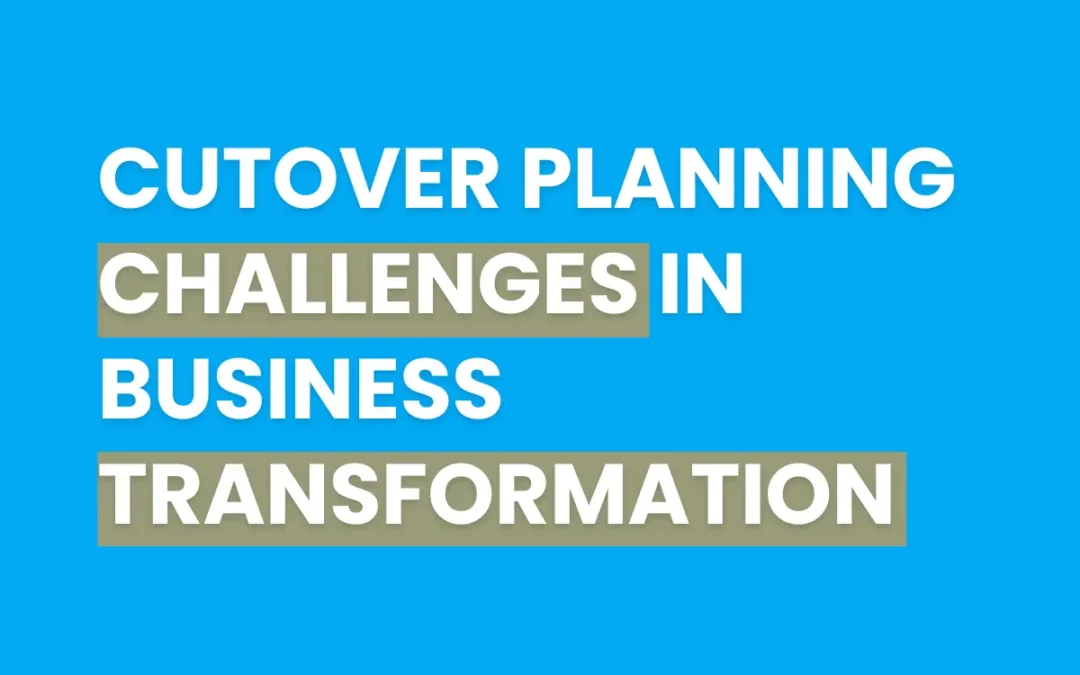Cutover Planning Challenges In Business Transformation

Why Cutover Planning is Critical for Business Transformation Success
Cutover management is the final—and often most critical—phase of any IT or digital transformation. It’s the moment when old systems are decommissioned, and new ones go live. Done right, it ensures a seamless transition. Done poorly, it can lead to costly downtime, operational chaos, and even project failure.
For IT Directors and Programme Directors, the stakes couldn’t be higher:
- 74% of digital transformations fail due to execution issues, with cutover being a major culprit.
- Unplanned downtime can cost businesses $5,600 per minute (Gartner).
- Stakeholder trust erodes quickly when cutovers go wrong, jeopardizing future initiatives.
In this article, we’ll explore:
- Common cutover planning challenges that derail transformations.
- The real-world consequences of poor execution.
- Proven best practices to ensure a smooth, risk-free transition.
Top Cutover Risks That Derail IT Transformations
1. Lack of Clear Ownership and Accountability
A cutover involves multiple teams—IT, operations, vendors, and business units. Without defined roles:
- Decisions get delayed as teams wait for approvals.
- Critical tasks fall through the cracks due to miscommunication.
- Blame-shifting occurs when issues arise.
Solution: Assign a Cutover Manager with end-to-end responsibility and a RACI matrix (Responsible, Accountable, Consulted, Informed) for all tasks.
2. Inadequate Testing and Scenario Planning
Many organizations skip full-scale dress rehearsals, leading to:
- Unexpected system failures during go-live.
- Integration gaps between legacy and new platforms.
- Data migration errors that corrupt records.
Solution: Conduct mock cutovers, including:
- End-to-end testing (not just technical, but business process validation).
- Rollback drills to ensure quick recovery if needed.
3. Timeline Pressures and Unrealistic Schedules
Leadership often demands aggressive timelines, forcing teams to:
- Cut corners on testing.
- Overlook dependencies (e.g., third-party vendor readiness).
- Burn out teams, increasing human error risks.
Solution: Build buffer time into the schedule and insist on phased cutovers where possible.
How Cutover Failures Impact Business Transformation
1. Operational Disruption and Downtime Costs
A botched cutover can halt business operations, leading to:
- Lost revenue (e.g., e-commerce sites crashing during peak sales).
- Employee productivity losses (downtime = idle staff).
- Regulatory fines if compliance systems fail (e.g., GDPR breaches).
Example: A major bank’s failed core system cutover left customers unable to access accounts for 48 hours, costing millions in remediation.
2. Stakeholder Distrust and Project Delays
When cutovers fail:
- Executives lose confidence in the IT leadership team.
- Future budgets get slashed due to perceived risk.
- Project timelines extend, delaying ROI realization.
Example: A global retailer’s ERP cutover mishap delayed their supply chain rollout by 6 months, missing a critical holiday season.
3. Compliance and Security Risks
Poorly managed transitions expose businesses to:
- Data breaches (e.g., incomplete encryption during migration).
- Audit failures if records are corrupted or misplaced.
- Legal liabilities from service-level agreement (SLA) violations.
Solution: Include compliance checkpoints in the cutover plan and involve InfoSec teams early.
Proven Strategies for Flawless Cutover Execution
1. Establish a Dedicated Cutover Team
A cross-functional team ensures:
- Clear roles (who does what, when).
- 24/7 support during go-live.
- Single point of contact for issue escalation.
Key roles to include:
- Cutover Manager
- Technical Leads
- Business Process Owners
- Business Data Owners
- Vendor Representatives
2. Implement Rigorous Testing and Dry Runs
A successful cutover requires:
- Technical testing (system integrations, data migration).
- Business process validation (can users perform tasks in the new system?).
- Business data validation (bullet proof dota reconciliation between legacy and the new system)
- Disaster recovery drills (how fast can you revert if needed?).
Best practice: Use a cutover detailed plan with step-by-step checklists.
3. Leverage a Phased Rollout Approach
Instead of a risky “big bang” cutover, consider:
- Pilot launches (e.g., one region or department first).
- Parallel runs (old and new systems operate simultaneously for validation).
- Gradual decommissioning (shut down legacy systems in stages).
Example: A healthcare provider reduced risk by migrating patient records one clinic at a time rather than all at once.
Conclusion: Mastering Cutover Planning for Transformation Success
Cutover is the make-or-break moment in business transformation. The difference between success and failure often comes down to:
- Proactive planning (not leaving it to the last minute).
- Rigorous testing (assuming nothing will work as expected).
- Strong governance (clear ownership and escalation paths).
If you’re leading an IT or digital transformation, don’t leave cutover to chance. Partnering with experts can mean the difference between a flawless launch and a costly disaster.
Need help ensuring a smooth cutover? Contact us for proven cutover management services tailored to your project.
Liked this article? Share it with your network and tag IT leaders who need to see it!



